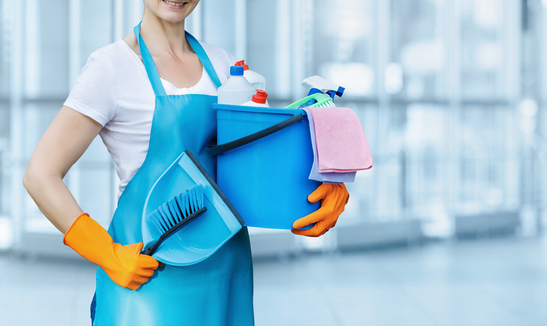Tips On How to Master Everyday Cleaning: Tips for Effective Defrosted and Cleaned Every Few Months and Decluttering
Tips On How to Master Everyday Cleaning: Tips for Effective Defrosted and Cleaned Every Few Months and Decluttering
Blog Article
Recognizing the Need for Extensively Disinfecting and Disinfecting Frequently Touched Surface Areas in High-Traffic Locations
In the world of public health and safety, the meticulous sanitation and sanitization of regularly touched surfaces in high-traffic areas stand as critical measures in avoiding the spread of harmful pathogens. The relevance of this practice extends far beyond plain tidiness, delving into the world of illness avoidance and neighborhood health. By exploring the numerous elements of surface area disinfection, from the dangers linked with neglecting cleaning methods to the reliable methods that can be utilized, a clearer understanding arises of the vital role these practices play in safeguarding public health. As we browse this discussion, it becomes obvious that the effects of comprehensive surface disinfection resound not just within the boundaries of a certain atmosphere but also resonate on a broader scale, impacting the health and wellness and security of people throughout varied common settings.
Relevance of Surface Area Sanitation
Highlighting the extensive disinfection of high-traffic surface areas is essential in preserving a hygienic environment and protecting against the spread of dangerous virus. High-touch surface areas such as door manages, light switches, lift buttons, and countertops serve as reproducing grounds for viruses and bacteria. Routine disinfection of these surface areas is necessary to decrease the threat of contamination and transmission of ailments.
By implementing a robust sanitation method, institutions and services can develop a safer setting for staff members, customers, and visitors. Correct surface sanitation not just alleviates the spread of transmittable conditions but additionally instills confidence in the tidiness and security of the facilities. This proactive approach shows a commitment to wellness and health, which is especially crucial in high-traffic areas where the possibility of exposure to virus is increased.
Furthermore, surface disinfection plays a crucial function in general infection control techniques. Combined with hand health techniques, using masks, and maintaining physical distancing, comprehensive sanitation of high-touch surface areas creates a detailed protection against the transmission of harmful bacteria. Focusing on surface sanitation is an essential component of an all natural method to health and wellness in common rooms.
Dangers of Disregarding Cleansing Practices
Overlooking thorough sanitation of high-traffic surface areas significantly enhances the danger of bacterial and viral contamination, presenting a serious risk to the wellness and safety of individuals frequenting these spaces. Failure to implement appropriate cleansing techniques can lead to the accumulation and spread of damaging microorganisms, consisting of infections and microorganisms, on regularly touched surface areas such as doorknobs, handrails, elevator buttons, and counter tops.

Additionally, ignoring the importance of thorough cleaning not only compromises the health of people however also threatens initiatives to keep a sanitary and clean atmosphere. It is critical to acknowledge the importance of appropriate sanitation methods in protecting against the spread of infections and protecting public wellness.
Efficient Disinfection Approaches
To preserve optimum tidiness and decrease the threat of contamination on high-traffic surface areas, using efficient disinfection approaches is necessary. One of the most reliable and common disinfection approaches is using chemical anti-bacterials.
An additional effective approach is the use of UV-C light. UV-C light has been shown to be efficient in eliminating a large variety of bacteria by disrupting their DNA structure, hence avoiding them from replicating. It is crucial to make use of UV-C light properly, guaranteeing that the right strength and exposure time are applied to achieve the desired disinfection outcomes.
Furthermore, employing heavy steam cleaning as a disinfection technique can be extremely reliable, particularly on surface areas that are heat-resistant. Steam can penetrate permeable surface areas and kill microorganisms, infections, and other virus successfully. When using vapor cleaning, it is very important to make certain that the surface reaches the called for temperature level for an enough quantity of time to guarantee correct disinfection.
Influence On Public Health And Wellness
The upkeep of high requirements of tidiness and sanitation on high-traffic surfaces plays a vital role in safeguarding public health and wellness. Regularly touched surfaces in areas with high step, such as doorknobs, handrails, elevator buttons, and washroom facilities, work as breeding premises for unsafe pathogens. Failing to sufficiently decontaminate these surfaces can cause the fast spread of transmittable illness within areas. By applying complete sanitation procedures, the threat of transmission of infections, microorganisms, and other germs can be significantly lowered.
Reliable cleanliness methods not only secure people from falling unwell yet likewise add to the total health of culture. Public health and wellness authorities emphasize the relevance of preserving clean atmospheres to avoid outbreaks and include the spread of ailments. In high-traffic areas like airport terminals, institutions, hospitals, and mass transit systems, the impact of rigorous sanitation procedures can not be downplayed. Prioritizing the sanitization of regularly touched surface areas is an aggressive strategy to promoting public health and enhancing the safety of people in common areas.
Applying Routine Cleansing Procedures
Promptly setting up and sticking to a constant routine of cleaning procedures is critical for keeping the cleanliness and safety and security of high-traffic surfaces. Routine cleaning methods are crucial in stopping the buildup of bacteria and microorganisms on frequently touched surfaces, particularly in areas with high foot website traffic. By carrying out a systematic approach to cleaning, organizations can properly lower the risk of illness transmission and develop a healthier environment for employees, clients, and the public.
To establish an effective cleansing schedule, it is vital to recognize high-traffic areas that call for frequent focus. These areas might include doorknobs, hand rails, elevator switches, bathroom facilities, and shared devices. Implementing a regular cleansing routine that targets these surfaces several times a day can considerably reduce the spread of dangerous microorganisms and viruses.
Furthermore, using proper cleaner and disinfectants is crucial to ensuring that surface areas are thoroughly sanitized. Normal training of cleaning up staff on proper cleansing strategies and the significance of adherence to the cleansing timetable is also important in maintaining a hygienic atmosphere. By focusing on consistent cleaning methods, organizations can promote useful source the wellness and well-being of people who engage with these high-traffic surfaces.

Verdict
In verdict, it is essential to focus on thorough sanitation and sanitization of regularly touched surface areas in high-traffic areas to protect against the spread of harmful virus and maintain public health. Neglecting proper cleansing techniques can boost the risk of contamination and transmission of illness. By implementing routine cleansing procedures and using effective sanitation methods, we can produce a more secure setting for everyone (defrosted and cleaned every few months). It is vital to recognize the importance of keeping clean surface areas in high-traffic locations to ensure the wellness of the neighborhood.
In the realm of public wellness and security, the meticulous sanitation and sanitization of regularly touched surface areas in high-traffic areas stand as vital measures in avoiding the spread of unsafe microorganisms. By exploring the various elements of surface Bonuses area sanitation, from the dangers linked with disregarding cleansing protocols to the efficient approaches that can be employed, a more Check Out Your URL clear understanding arises of the essential duty these practices play in safeguarding public health and wellness.Additionally, employing vapor cleansing as a sanitation method can be extremely reliable, particularly on surfaces that are heat-resistant. When making use of heavy steam cleaning, it is crucial to ensure that the surface reaches the required temperature level for a sufficient quantity of time to assure appropriate disinfection.
In verdict, it is essential to prioritize detailed sanitation and sanitization of regularly touched surfaces in high-traffic areas to prevent the spread of dangerous pathogens and preserve public wellness.
Report this page